#CPP tutorial
Explore tagged Tumblr posts
Text
Coding tutorial: Chain-of-responsibility pattern
A peasant, knight and king walk into a software design tutorial, and are here to teach you the chain-of-responsibility pattern. Learn how to create a chain of handlers which can handle different request types.
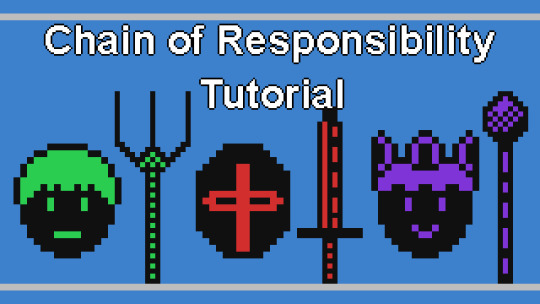
This tutorial shows you how to code the chain-of-responsibility pattern in the Visual Studio development environment, using a console application and the C++ programming language.
The chain-of-responsibility pattern passes on a request to a chain of handlers one at a time. Each handler can handle different requests. So if the first handler can’t handle the request, then it will pass it on to the next handler. Once a request is handled, the chain ends. Since there is no longer a need to pass on the request.
It is also possible that the request doesn’t get handled by any of the handlers. Since each handler can handle 0, 1 or many requests of different types.
See the full tutorial here.
Console output:
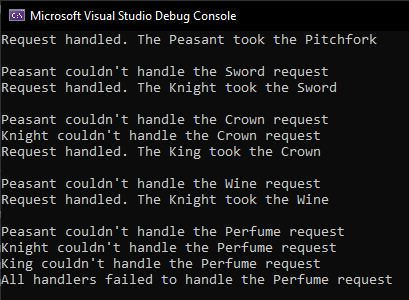
#cpp#coding#programming#gamedev#indiedev#tutorial#visual studio#software#software design#software development#game development#design patterns#cppprogramming
20 notes
·
View notes
Text
Array Sorting in C++: A Quick Guide ✨
Hey coders! 👋 Let's talk about something super useful: Sorting Arrays in C++. Whether you are a newbie or brushing up your skills, this is essential knowledge.
What's the Deal with Sorting? 🤔 Sorting means putting your array elements in order (ascending or descending). It's crucial for making data easier to search, analyze, and work with.
Key Sorting Ideas 💡
Comparison & Swapping: Most sorting methods compare elements and swap them if they're in the wrong order. Think of it like rearranging books on a shelf!
Iteration: Sorting involves going through the array multiple times. It’s like checking every item to make sure it’s in the right spot.
Sorting Order: Usually, we sort from smallest to largest, but you can also sort from largest to smallest, or by any custom rule.
Choosing the Right Method: Different tasks require different methods.
Simple Methods (Bubble, Insertion): Easy to grasp but slow for big arrays. Great for learning the basics! Efficient Methods (Quick, Merge): Faster for large amounts of data but a bit more complex.
Sorting in Action 🚀
Manual Sorting: Write your own sorting code using loops and if statements. Good for understanding how it works under the hood.
Using std::sort(): C++'s built-in function that's super fast and easy to use.
#including<algorithm> int arr[] = {5, 3, 8, 6, 2}; int n = sizeof(arr)/sizeof(arr[0]); std::sort(arr, arr + n); // Sorts in ascending order
Custom Sorting: Sort your way by using a special function to define your own sorting logic.
Quick Guide Table 📚

Sorting is super important for any C++ project! 💻 Hope this gives you a clearer picture. 🎉
4 notes
·
View notes
Text
Mastering C++: A Complete Tutorial for Beginners and Beyond
0 notes
Text
We have many episodes in Unreal Engine and C++, but none with Rider. Rider is a great IDE for Windows, Linux, and Mac when working with Unreal!
youtube
#shawnthebro#ue4#unreal#stb#tutorial#youtube#unrealengine#unrealtutorial#unrealengine4#programming#unreal engine 5#unreal engine 4#unreal engine#ue5#rider#CLion#jet brains#ide#ide for c++#ide for unreal#for UE#best ide for unreal#best code for unreal#best program for unreal#for unreal#for#c#c++#cpp#cpp code
0 notes
Text
📦 Stacks in C++ — A Beginner’s Best Friend 💥
Hey there, curious coder! 👀 We already met arrays (static storage) and linked lists (dynamic storage). Now it’s time to meet their cool cousin: the Stack.
🌊 What’s a stack, anyway?
A stack is like a stack of plates 🍽️ or books 📚:
You add new items on top.
You remove items from top.
You cannot take out something from the middle.
This is called Last In, First Out (LIFO).
📋 Real-life examples:
✅ Browser history → back button ✅ Undo in a text editor ✅ Function calls in your program (call stack) ✅ Reversing a string
⚙️ Core operations (CRUD)
Let’s break it into CRUD style: OperationMeaningCreateMake an empty stackReadLook at the top elementUpdateChange the top elementDeleteRemove the top element
💥 C++ Implementation (Array-based stack)
We’ll build a fixed-size stack using arrays.
✅ Create a stack
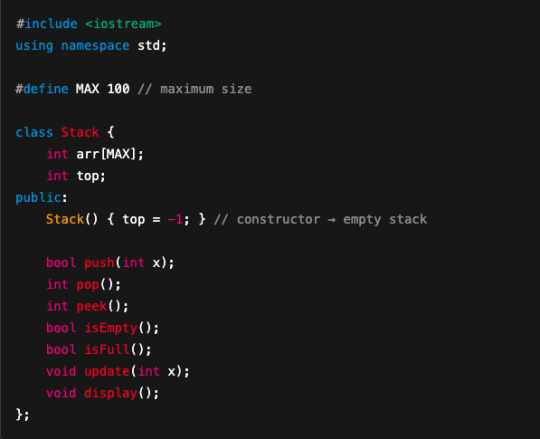
➕ Push (Create/Add)
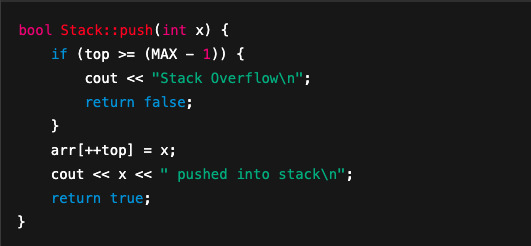
➖ Pop (Delete)
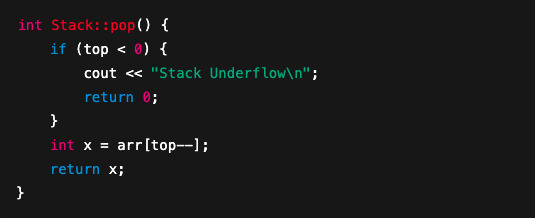
👀 Peek (Read)

🔄 Update top (Update)
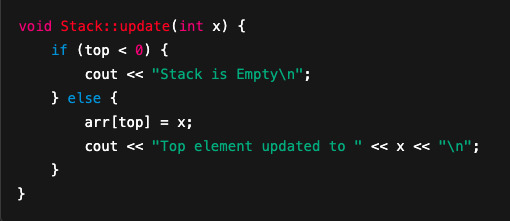
💬 Check if empty / full
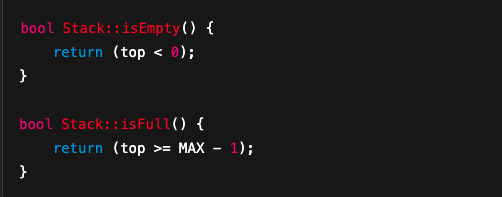
📃 Display stack

🚀 Main function to test it all

✨ Key Takeaways
✔ Stack = LIFO → top-based operations ✔ CRUD = push, pop, peek, update ✔ Check for overflow and underflow ✔ Real-world applications everywhere!
🔥 Next up?
Want me to prepare a post on Queues in C++ (with CRUD + theory)? Or a linked-list based stack? Let me know — I’m ready! 🚀
#cpp#cplusplus#programming#coding#developers#datastructures#stack#algorithm#learntocode#computerscience#codingbeginner#programmingcommunity#codinglife#developerlife#education#tech#lifo#softwareengineering#code#codelife#tutorial#stackimplementation#cruddemo#beginnerfriendly#learnprogramming
1 note
·
View note
Text
Pointers in C++ are simple to learn but very useful for building programs. Learn these to manipulate memory in C++:
Pointer Arithmetic
Array of Pointers
Passing Pointers to Functions
Return Pointer from Functions
Source: Tutorialspoint
0 notes
Text
youtube
C++ Substring in Hindi | Get Substring from String in C++ | C++ Tutorials
In C++, a substring is a contiguous sequence of characters within a string. The C++ Standard Library provides a built-in method called .substr() for extracting substrings from std::string objects. For more Details, Kindly check my website URL. https://www.removeload.com/cpp-substring
0 notes
Video
youtube
What Is an Image? - Cpp Computer Graphics Tutorial, (GPU, GUI, 2D Graph...
0 notes
Text
From Zero to C++ Hero: The Ultimate Beginner’s Guide to Mastering C++ If you're reading this, chances are you're ready to dive into the world of programming and have chosen C++ as your starting point. Congratulations! C++ is a powerful, versatile language used in everything from game development to high-performance computing. But where should you begin? Learning C++ can seem daunting, especially if you're a beginner. Don't worry—this guide will walk you through the best ways to learn C++, step by step, in a way that’s engaging and effective. Why Learn C++? Before we dive into the how, let’s talk about the why. C++ is one of the foundational programming languages. It’s known for its: Performance: C++ is a compiled language, making it faster than many others. Versatility: It’s used in various domains like game development, operating systems, and even financial modeling. Career Opportunities: Mastering C++ can open doors to lucrative job roles. Understanding why C++ matters will keep you motivated as you tackle its complexities. Step 1: Get Familiar with the Basics 1.1 Understand What C++ Is C++ is an object-oriented programming language. It builds on C and introduces features like classes and inheritance, which make it powerful yet complex. 1.2 Install a Compiler and IDE Before writing any code, you need the right tools: Compiler: Popular choices include GCC and Clang. IDE: Visual Studio Code, Code::Blocks, or CLion are beginner-friendly. 1.3 Learn Syntax Basics Start with: Variables and data types Loops (for, while) Conditionals (if, else if, else) Functions There are plenty of beginner tutorials and videos to guide you through these. Step 2: Use Structured Learning Resources 2.1 Books "C++ Primer" by Stanley Lippman: Great for beginners. "Accelerated C++" by Andrew Koenig: Ideal for fast learners. 2.2 Online Courses Platforms like Udemy, Coursera, and Codecademy offer interactive courses: Look for beginner-friendly courses with hands-on projects. 2.3 Tutorials and Documentation The official C++ documentation and sites like GeeksforGeeks and Tutorialspoint are excellent references. Step 3: Practice, Practice, Practice 3.1 Start with Small Projects Begin with simple projects like: A calculator A number guessing game 3.2 Participate in Coding Challenges Platforms like HackerRank, LeetCode, and Codeforces offer challenges tailored for beginners. They’re a fun way to improve problem-solving skills. 3.3 Contribute to Open Source Once you're comfortable, contributing to open-source projects is a fantastic way to gain real-world experience. Step 4: Learn Advanced Topics As you gain confidence, dive into: Object-oriented programming (OOP) Data structures and algorithms File handling Memory management and pointers Step 5: Build Real-World Projects 5.1 Why Projects Matter Building projects will solidify your skills and make your portfolio stand out. 5.2 Project Ideas Simple Games: Like Tic-Tac-Toe or Snake. Basic Software: A to-do list or budgeting app. Algorithms Visualization: Create a visual representation of sorting algorithms. Step 6: Join Communities and Stay Updated 6.1 Online Forums Participate in forums like Stack Overflow or Reddit’s r/cpp to ask questions and share knowledge. 6.2 Meetups and Conferences If possible, attend local programming meetups or C++ conferences to network with professionals. 6.3 Follow Experts Stay updated by following C++ experts and blogs for tips and best practices. Tools and Resources Round-Up Here are some of the best tools to boost your learning: Compilers and IDEs GCC Visual Studio Code Online Platforms Codecademy HackerRank Books "C++ Primer" "Accelerated C++" Final Thoughts Learning C++ is a journey, not a sprint. Start with the basics, practice consistently, and don’t hesitate to seek help when stuck.
With the right resources and determination, you’ll be writing efficient, high-performance code in no time. Happy coding!
0 notes
Text
https://www.unitymix.com/blogs/50443/Why-C-Still-Rules-the-World-of-Game-Development
0 notes
Text
Coding tutorial: Observer pattern

The observer pattern has an object named the ‘subject’ which maintains a list of ‘observers’. The subject will notify all the observers when an event occurs. The observers can then choose how they wish to respond to the event.
In this tutorial you will code a zookeeper and animals. The zookeeper represents the subject of the observer pattern. Whilst the animals represent the observers.
The zookeeper will notify the animals when he arrives, and the animals will respond in there own unique way.
To follow along to this tutorial, you can either just read it and apply the knowledge to your programming language. Or you can use Visual Studio, by creating a solution, then create a project with a console application. Then run the project to see the output in the console window.
Walkthrough and full code example on the blog:
#cpp#programming#coding#gamedev#indiedev#visual studio#tutorial#software#software design#software development#design patterns
24 notes
·
View notes
Text
Mastering C++ Programming: A Beginner's Guide to a Powerful Language
In the world of technology, C++ Programming remains one of the most reliable and versatile languages. It has powered everything from operating systems to game development, making it a must-learn for anyone serious about a career in coding. If you’ve ever wondered what makes C++ Programming so popular or how to get started, this guide is here to help.
What is C++ Programming and Why Should You Learn It?
C++ is a general-purpose programming language known for its high performance, efficiency, and versatility. Developed by Bjarne Stroustrup in 1985, C++ builds on the foundation of C by introducing object-oriented programming (OOP) principles, making it both powerful and scalable.
Top Reasons to Learn C++
Wide Applicability: From creating system software to video games, C++ Programming is used across industries.
Job Opportunities: Companies worldwide are always on the lookout for developers skilled in C++ Programming.
Community Support: With a large, active community, it’s easy to find resources, forums, and tutorials to enhance your learning.
Foundation for Advanced Concepts: Mastering C++ Programming lays a strong foundation for other languages like Python, Java, or C#.
Key Features of C++ Programming
1. Object-Oriented Programming (OOP)
OOP principles such as encapsulation, inheritance, and polymorphism make code modular and reusable. For example, creating classes and objects helps in managing larger projects more effectively.
2. High Performance
Unlike interpreted languages, C++ is compiled, ensuring faster execution speeds. This makes it ideal for performance-critical applications like gaming engines and real-time systems.
3. Cross-Platform Compatibility
C++ programs can run on multiple platforms without major modifications, thanks to its compatibility with various compilers like GCC, Clang, and Microsoft Visual C++.
4. Extensive Libraries and Frameworks
C++ offers numerous standard libraries (like STL for data structures) and frameworks (like Qt for GUI development), making it easier to tackle diverse projects.
Getting Started with C++ Programming
Starting with C++ Programming can feel overwhelming, but with the right approach, you can build a strong foundation.
1. Install a Compiler and IDE
You need a compiler like GCC or Microsoft Visual Studio to convert your code into machine language. For a better coding experience, consider using an IDE like:
Code::Blocks
Eclipse CDT
CLion
2. Learn the Basics
Begin with fundamental concepts such as:
Variables and Data Types
Input and Output Streams
Loops (for, while, do-while)
Conditionals (if-else, switch)
Here’s a simple program to print "Hello, World!" in C++:
cpp
Copy code
#include <iostream>
using namespace std;
int main() {
cout << "Hello, World!" << endl;
return 0;
}
Popular Applications of C++ Programming
1. Game Development
With its high performance and real-time processing capabilities, C++ Programming is extensively used in creating video games. Frameworks like Unreal Engine rely on C++ for game mechanics and rendering.
2. Operating Systems
Operating systems like Windows, Linux, and macOS utilize C++ for their core functionalities, thanks to its close-to-hardware performance.
3. Embedded Systems
Devices like routers, medical equipment, and automotive systems use C++ due to its ability to manage hardware efficiently.
4. Financial Software
Applications that require fast calculations, such as trading systems, are often written in C++.
Tips for Mastering C++ Programming
1. Practice Regularly
Consistent practice is key. Solve problems on platforms like HackerRank, Codeforces, or LeetCode to build confidence.
2. Explore Open-Source Projects
Contributing to open-source C++ projects on platforms like GitHub can provide hands-on experience and improve your portfolio.
3. Master Standard Template Library (STL)
STL offers pre-built functions for data structures like vectors, maps, and queues, making coding more efficient.
4. Learn Debugging Techniques
Use tools like gdb (GNU Debugger) to identify and fix bugs in your programs effectively.
FAQs About C++ Programming
1. Is C++ Programming Suitable for Beginners?
Yes! While C++ has a steeper learning curve compared to Python, it provides a deeper understanding of memory management and system-level programming.
2. Can I Learn C++ Online?
Absolutely. Platforms like Udemy, Coursera, and Codecademy offer comprehensive C++ courses.
3. How Long Does It Take to Learn C++?
With consistent effort, you can grasp the basics in a few months. Mastery, however, takes years of practice.
C++ Programming vs Other Languages
Feature
C++
Python
Java
Performance
High
Moderate
Moderate
Ease of Learning
Moderate
High
Moderate
Applications
System, Gaming
Web, Data
Enterprise Apps
Community Support
Extensive
Extensive
Extensive
Best Practices for C++ Programming
Write Modular Code: Break your program into functions and classes for better readability.
Use Comments Wisely: Add comments to explain complex logic but avoid over-commenting.
Optimize Memory Usage: Avoid memory leaks by deallocating unused memory using delete.
Test Thoroughly: Always test edge cases to ensure your code is robust.
Conclusion
Learning C++ Programming is a transformative journey that opens the door to countless career opportunities. Its versatility and performance make it a top choice for developers worldwide. Whether you’re building games, crafting software, or diving into
0 notes
Video
youtube
Accident & Sickness Insurance Canada Pension Plan CPP Quebec Pension Pla...
Financial education video lessons. Accident & Sickness Insurance. Canada Pension Plan CPP Quebec Pension Plan QPP Chapter 6 5 Here is all most important video lessons for each topic what you can find in a book for students and customers' about Accident & Sickness Insurance, disability insurance policies. This is first course in to finance and insurance industry, essential for beginners. Also will be useful for who decide to buy a course and get a agent license for work financial industry. In any case all the information will be very useful for everyone who decide to study about finance. Here you can find a lot of free audio book, and video lections for start your study quickly. What will be more than enough for beginning. More comprehensive information you can get buy register with us to get the discount for the course, where you can get all the necessary information for get your licenses as soon as possible. More information you can find in other videos. Sorry for the low quality of video and some background noise, videos quite old but all the information still the same. All the videos was recorder live in simple lecture style. Welcome to a world of comprehensive financial education where renowned experts delve deep into the intricacies of finance, delivering insightful lessons, lectures, and tutorials tailored for beginners and students alike. Our curated collection of videos combines expertise from the world's best specialists with clear and understandable illustrations, ensuring that even complex financial concepts are easily grasped. From understanding the basics of budgeting and saving to exploring advanced investment strategies, each lesson is crafted to empower individuals with the knowledge and skills needed to navigate the financial landscape confidently. Join us on this educational journey and unlock the secrets to financial success and prosperity. For joining us: https://registration.wfglaunch.com/ Recruit reference: 302NYC #FinancialEducation, #Financemanagement, #Accident&SicknessInsurance, #AccidentandSickness, #howtobecomewealthy, #universallifeinsurance, #howtobecomerich, #disabilityinsurancepolicy, #howtostartearnmoney, #lifeprotection, #freeeducation, #financialindustry, #freeEducationalVideos, #freeaudiobooks, #freeaudiobooksforfinancialeducation. #homestudy, #criticalillness,
0 notes
Text
Our special “Super” camera can also be converted to C++ code! Let’s do it!
youtube
#shawnthebro#ue4#unreal#stb#tutorial#youtube#unrealengine#unrealtutorial#unrealengine4#programming#ue5#UE#unreal engine#unreal engine 4#unreal engine 5#c++#code#cpp#cpp code#c++ code#camera#fighting game camera#fighting game#fighting#game#fighter#fighter camera#fight#blueprints#blueprint
0 notes
Text
youtube
C++ Access String in Hindi | Access String in C++ | C++ Tutorials
C-style strings are arrays of characters, and you can access individual characters using array indexing. Since these strings are terminated by a '\0' character, indexing will allow you to access the characters up to (but not including) the null terminator.For more Details, Kindly check my website URL. https://www.removeload.com/cpp-access-string
0 notes